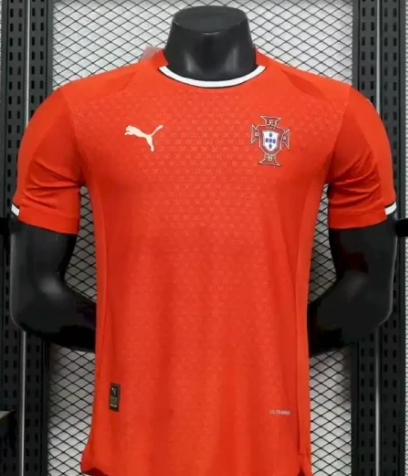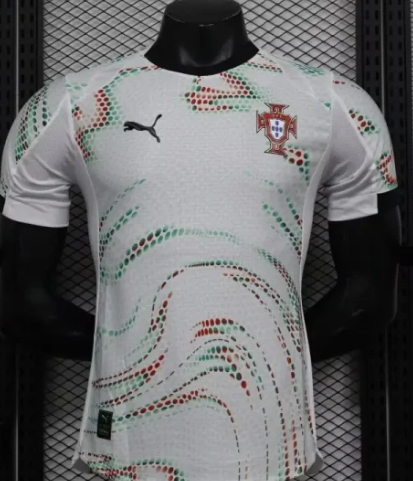portugal soccer jerseys football YUPOO china B2B2C Wholesale Supplier Branded national portugal soccer jerseys retro shirts, join us on whatsapp | Yupoo fashion national portugal soccer jerseys players jerseys football retro jerseys reseller online store , Yupoo jerseys Replica top version for yupoo wholesale drop shipping jerseys to worldwide.
Portugal's footballing history is marked by dramatic highs and poignant lows, and at the center of this journey is the national soccer team, known as "A Seleção" (The Selection). The team's jerseys have evolved over the years, becoming vibrant symbols of national pride, identity, and the passion of Portuguese fans. This overview will explore the history, significance, and evolution of Portugal's soccer jerseys, along with key milestones in the national team's journey.
Football was introduced to Portugal in the late 19th century, with the first match recorded in 1875. The Portuguese Football Federation (FPF) was established in 1913, leading to the formalization of football as a competitive sport in the country. The national team played its first official match on December 18, 1921, against Spain.
In the early years, Portugal’s soccer jerseys were relatively simple, typically featuring a plain design with the national colors of green and red—colors that represent the Portuguese flag. As football gained traction, the designs gradually became more intricate, reflecting the growing popularity of the sport.
The 1960s marked a significant era for Portugal, particularly during the 1966 FIFA World Cup held in England. Led by legendary player Eusébio, Portugal finished in third place, with Eusébio becoming the tournament's top scorer. The jerseys worn during this World Cup featured a classic green and red design with detailed patterns, resonating with fans and elevating the team's profile on the global stage.
The 1966 jerseys are particularly memorable, characterized by their bold colors and traditional Portuguese symbols. This period solidified Portugal’s presence in international football and increased the visibility of its national jerseys.
Portugal's significant success in the early 21st century came during the UEFA Euro 2004 tournament, which they hosted. The national team reached the final, showcasing remarkable talent, including stars like Cristiano Ronaldo, Luís Figo, and Rui Costa. The iconic red home kit worn during the tournament became a cultural symbol, generating immense pride among fans.
The jersey featured a striking design with the Portuguese crest prominently displayed, and the excitement of the event saw fans flocking to support their team in droves. Although Portugal lost in the final to Greece, the tournament marked an important chapter in the country’s football history, resulting in increased interest in the national team and its jerseys.
The pinnacle of Portugal's recent football history came with their victory at the UEFA Euro 2016 tournament in France. Managed by Fernando Santos, Portugal triumphed over France in the final, securing their first major international trophy. The jerseys worn during this tournament were celebrated not just for their aesthetics but also for their emotional significance.
The Euro 2016 home jersey retained the traditional red color but incorporated modern design elements, including stylish geometric patterns and refined detailing. The team’s victory further cemented the jersey's status as a symbol of national pride and sporting achievement.
The design of Portugal's soccer jerseys has evolved significantly over the years, reflecting changes in fashion, technology, and cultural trends.
Early Designs: Early jerseys were typically made of heavy materials, featuring basic designs. The national colors of green and red were evident, but the details were often minimalistic.
2000s: The turn of the millennium saw a shift towards more vibrant and dynamic designs. Collaborations with brands like Nike led to innovative jerseys with advanced materials focused on player performance. The incorporation of intricate patterns and designs created a distinct identity for the national team.
Modern Era: Recent jerseys feature advancements in textile technology, including moisture-wicking fabrics and lightweight constructions. The designs have become more artistic, often showcasing cultural elements and national symbols that resonate with Portuguese heritage. The latest iterations focus on keeping the balance between tradition and modern aesthetics.
Portugal’s soccer jerseys are emblematic of more than just athletic apparel; they represent national identity, unity, and pride. During international competitions, the streets of Portuguese cities transform into a sea of red and green, with fans donning their jerseys and celebrating their love for the national team.
Wearing the jersey symbolizes solidarity among supporters, creating a bond that transcends geographical boundaries. The emotional connection fans feel towards their national team and its jersey is a core element of Portuguese football culture.
Portuguese soccer jerseys have gained widespread recognition beyond Portugal, especially through the international success of players like Cristiano Ronaldo. The global appeal of the jerseys resonates among the Portuguese diaspora, who wear them with pride to celebrate their heritage and support their national team.
Merchandising and marketing strategies by the FPF and jersey manufacturers have also contributed to the jerseys’ popularity, connecting fans worldwide and enhancing engagement through social media platforms and fan events.
Portugal's soccer jerseys encapsulate the rich history and

